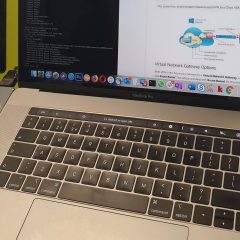Exchange Online – Increase Mailbox Size
Increase Mailbox Size KB ID 0001913 Problem If you want to Increase Mailbox Size for your online Microsoft email, then these are the storage limits (at time of writing). Microsoft Office 365 Plan Exchange Online Plan Mailbox Size Online Archive Size Microsoft 365 Business Basic Plan 1 50GB 50GB Microsoft 365 Business Standard Plan 1 50GB 50GB Microsoft 365 Business Premium Plan 1 50GB 1.5TB Office 365 F3 Kiosk 2GB Add-on Office 365...
Can I ‘Shrink’ My Exchange Database?
KB ID 0001706 Problem Saw this asked in a forum today, and my response was; It never gets smaller, if you delete things out of it, it just creates more ‘whitespace’ within the database, unless you; a) Take it offline, and defragment it using eseutil. b) Move the mailboxes out of it, to another database and delete it. Which is true, but even Microsoft say you should not need to defragment a database! Before you do anything...
Exchange – Move ‘ALL’ Mailboxes From One Database to Another
KB ID 0000864 Problem While replacing an Exchange Server on my test network last week, I needed to get all the mailboxes moved across to the new one. Exchange gets upset if you try and delete a mailbox database that has data in it. Solution 1. Launch the Exchange Management Shell > Firstly lets get the names of my Databases, then I can simply copy and paste them into the move mailbox command. Get-MailboxDatabase Get-Mailbox...
Mac OSX: Creating ‘Password Protected’ Zip Files
KB ID 0001357 Problem Me to the office: Does anyone know how to create a password protected Zip file on a Mac? Reply: Use Windows Well actually this advice is ‘bobbins!’ Windows still can’t do this without installing an application, (I would recommend 7-Zip). But with a Mac of course you can 🙂 Solution First open an Terminal window, then ‘change directory’ to the folder that contains the uncompressed...
Migrate Exchange 2010 to Exchange 2016 (& 2013)
Part 3 Migrating Certificates and Decommissioning Exchange 2010 KB ID 0000816 Problem Continued from Migration From Exchange 2010 to Exchange 2016 Part 2 Solution Exchange 2013/2016 Migration Step 8 Migrating Certificates from 2010 to 2016 Only consider doing this if you have a purchased (i.e. NOT using a self signed) certificate on your Exchange 2010 server. Bear in mind if you have the internal FQDN of your Exchange 2010 server as a...




